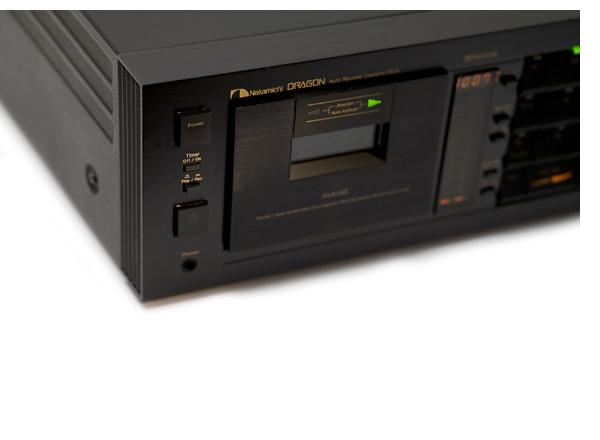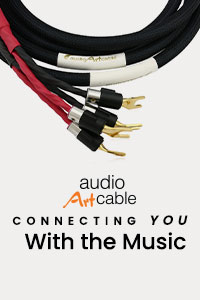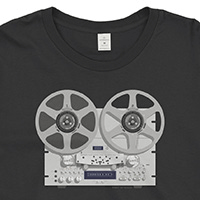Nakamichi Dragon
 With an 11-year production run that ended in 1993, the Nakamichi Dragon epitomized cassette-deck technology, and to many enthusiasts, it was considered the Holy Grail of what could be accomplished at 1 7/8 i.p.s. A three-head deck with discrete heads for recording, playback and erase, it used Nakamichi’s NAAC auto azimuth correction to optimize playback azimuth on any tape played. While some other Nakamichi models used an adjustable record azimuth, the Dragon concentrated on the playback domain. This resulted in a Nakamichi deck that could play back tapes recorded on other manufacturers’ machines as well as doing a great job with pre-recorded tapes.
With an 11-year production run that ended in 1993, the Nakamichi Dragon epitomized cassette-deck technology, and to many enthusiasts, it was considered the Holy Grail of what could be accomplished at 1 7/8 i.p.s. A three-head deck with discrete heads for recording, playback and erase, it used Nakamichi’s NAAC auto azimuth correction to optimize playback azimuth on any tape played. While some other Nakamichi models used an adjustable record azimuth, the Dragon concentrated on the playback domain. This resulted in a Nakamichi deck that could play back tapes recorded on other manufacturers’ machines as well as doing a great job with pre-recorded tapes.
Alas, the Dragon ceased to be at the end of the analog age. Soon after its introduction, the Compact Disc would arrive on the scene and shortly thereafter become the ubiquitous format of choice. Either way, with a list price of $2,499 in 1982, this was truly a high-end machine. I always wanted a Dragon, but its spell eluded me until just recently.
These days, the toughest part of keeping any tape machine running smoothly (or any piece of vintage gear for that matter) is finding a good tech. With Nakamichi decks, there are no new parts being produced because the company disappeared into bankruptcy in 2002 after being acquired by a Chinese firm. Fortunately, plenty of parts decks remain for sale on the internet, and there are a few acknowledged masters who keep the Nakamichi flame burning brightly.
Thanks to a suggestion from a friend, I found Willy Hermann of Willy Hermann Services. You can find him on the web at: www.willyhermannservices.com . A life-long Nakamichi technician who also owned a few high-end retail stores, he now concentrates on Nakamichi and Krell repair. Mr. Hermann was very helpful on the phone and gave me perhaps the best tip of all: “Pick one up that doesn’t work. They almost all need repair anyway, so don’t pay a premium price for a used Dragon.” Fortunately, the person from whom I purchased the deck on eBay for $410 was willing to ship it straight to Hermann, after a little convincing that I wasn’t trying to pull an eBay scam on him.
Hermann’s service came to just under $600 and required six hours of his labor and about $40 worth of parts. As it turned out, I had bought pretty much a basket-case deck; the record and play heads needed repair as well as most of the transport assembly. But I’ve heard of people spending more-than twice this much on a deck that still needed a going over. If your heart is set on a Dragon, plan on spending $1,200 – $1,600 by the time you are done. If you aren’t as adventuresome as I am, look for a deck on Audiogon that has been recently serviced by Hermann, and make sure they have all the paperwork. It’s a lot like buying a vintage Porsche 356; you’re going to have to spend the money one way or another if you want it to run right.
Hermann sent me a note when the Dragon arrived, and since I was buried with my duties here, told him not to rush the job. Two weeks later, it arrived on my doorstep, packed way better than it did when it left the Nakamichi factory. As I saw the care that was taken in packing this machine, any doubts I had about its performance began to fade away. After all, it was a little chancy to buy a relatively expensive tape deck from a stranger, ship it to another stranger, pay them both and hope all would turn out well.
But that’s what happened. Once the photos were taken for this article, the deck was installed in my main system and connected directly to the single-ended outputs of the Audio Research Reference Phono 2 with the Oracle Delphi V/SME iV.VI/Koetsu Urushi Blue combination, and I recorded a few tracks. The result was breathtaking. On many levels, it rivaled open-reel performance. Granted, when comparing the same track to my J-Corder Technics 1500 recorded at 15 i.p.s., the compact cassette gave up a little ground, but not much, especially with metal tape. The open-reel deck may have more image depth, but the Dragon has more-even bass response and remarkably smooth, extended highs.
I dug out a few pre-recorded tapes from my collection and cued up some Tangerine Dream, recorded on Cr02, and I was amazed by the results. A number of non-audiophile friends couldn’t believe I was listening to a lowly cassette, and a pre-recorded one at that. Our resident HMEC (human musical encyclopedia & collector) Tom Casselli sent me a MoFi recording of Dark Side of the Moon. “Dude, if you have a Dragon, you should be the keeper of this tape.” Yeah, it was cool and now the hunt for a few more MoFi cassettes is on.
But making mix tapes is still the most fun thing you can do with a cassette deck. A good music server makes this somewhat redundant, but if you have a substantial vinyl collection, it’s a great way to spend an evening with a glass of your favorite adult beverage and a pile of albums, figuring out just how many tracks you can fit on one side of a TDK SA 90. If you’re really good, you can run music right to the end of both sides of the tape. Just the way we did it back in the late ’70s.
In the past, cassette decks have left me cold, trading convenience for ultimate sonic performance. But the Dragon is in a class of its own. I truly wish I had sprung for one when they were introduced instead of buying the CD player that my local HiFi dealer convinced me was the wave of the future.
Even though music servers have all but made the mix tape obsolete, there is still something special about planning out a few custom tapes that you create yourself. If this sounds like fun to you, watch eBay for the Nakamichi you desire (I highly suggest a Dragon) and give Willy a call. You’ll be glad you did. -Jeff Dorgay







